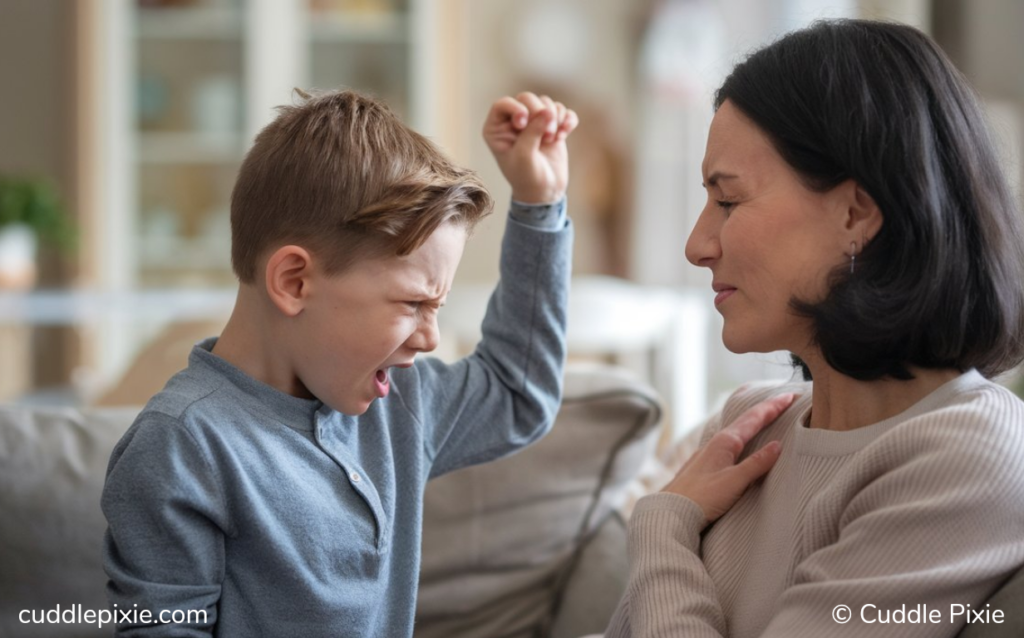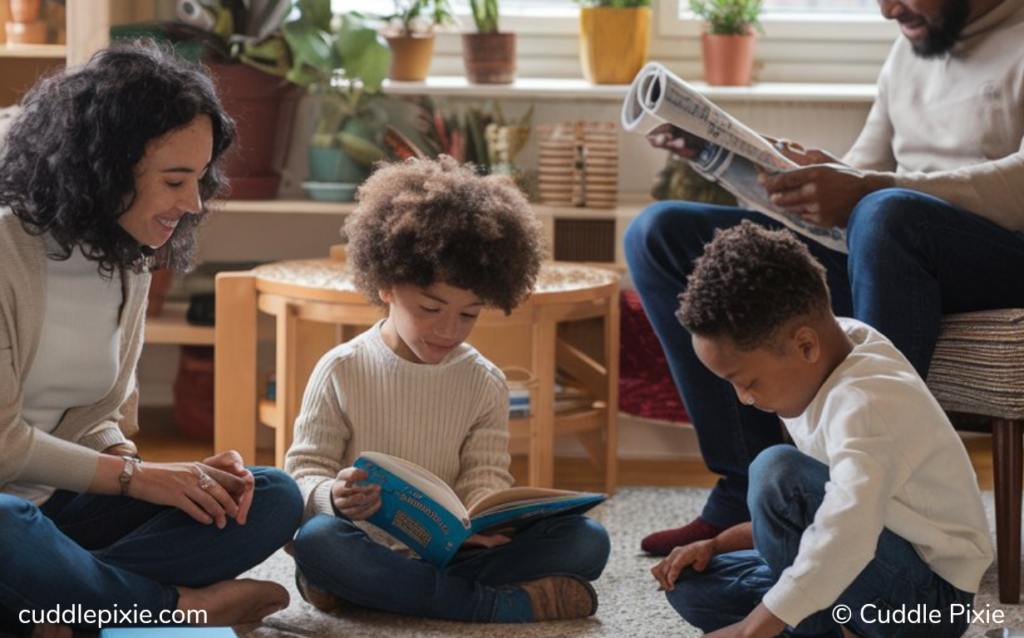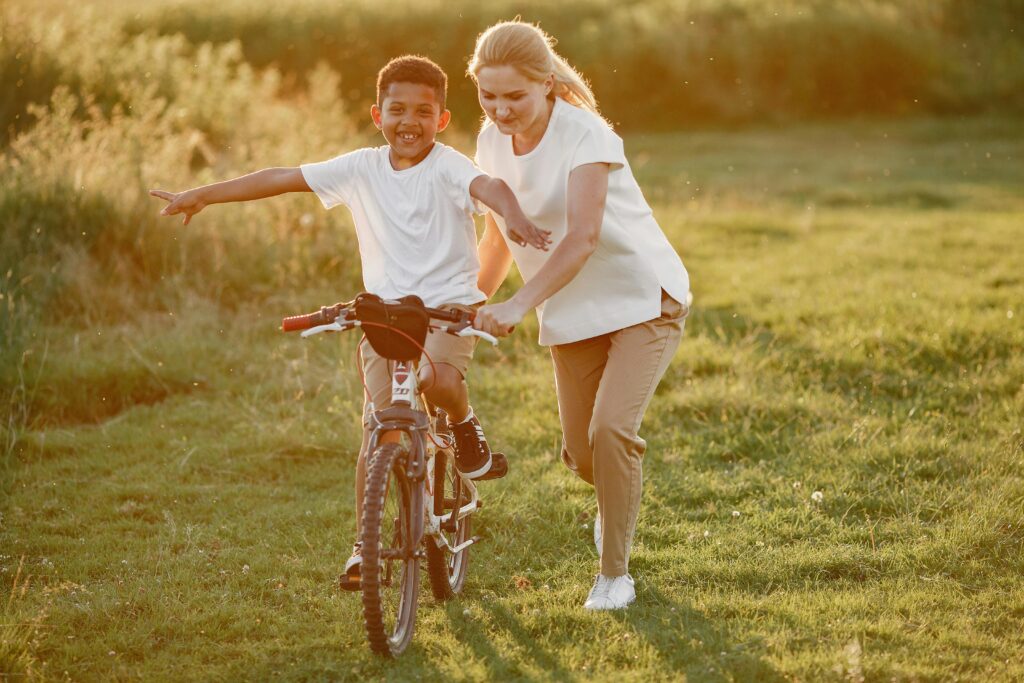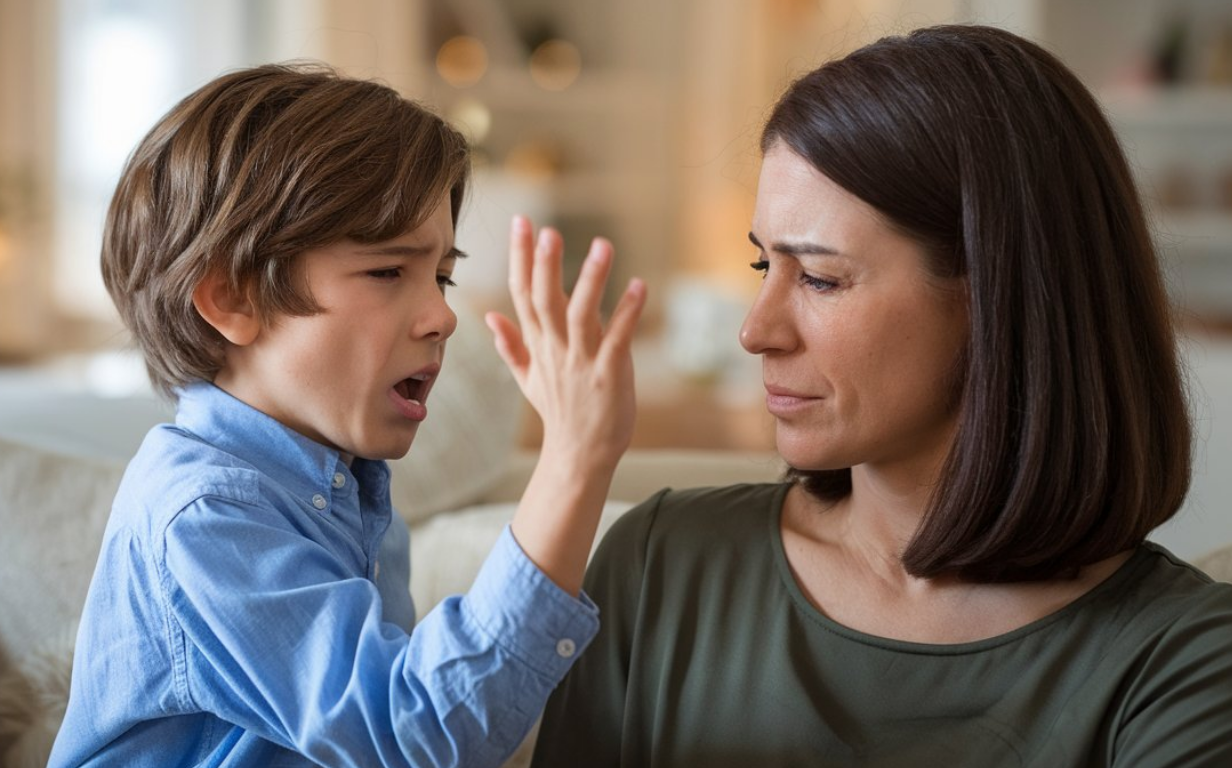Reviewed by Dr. Robbie Anderson, MBBS, MD, Pediatric Specialist
Edited by Salwa Miller, LCPC
As a certified parenting coach and a parent myself, I understand how heartbreaking it can be when your child, especially one as young as seven, starts hitting. You may be asking yourself, “Is this normal? What am I doing wrong?” or even questioning your parenting approach. Believe me, you’re not alone. Many parents face this same issue, and the good news is that there are effective, compassionate strategies that can help.
In this article, I’ll walk you through the reasons why children hit, whether it’s typical behavior, and—most importantly—how to manage and reduce it. We’ll cover research-backed insights, tips from leading child psychologists, and practical steps that you can take today.
Takeaways
- Hitting in 7-year-olds is often linked to frustration or difficulty expressing emotions, and it’s a common developmental phase.
- Staying calm and setting clear boundaries are essential in managing aggressive behavior and teaching your child appropriate emotional responses.
- Teaching children alternative ways to express their frustration, like deep breathing or role-playing, can help reduce physical aggression.
- Persistent hitting may indicate underlying emotional or behavioral issues, and consulting a professional can provide valuable guidance.
- Positive reinforcement, structured routines, and physical outlets for energy can significantly reduce aggression and promote healthier behavior.
In This Article
Why Kids Hit: Understanding the Root Cause
Children often act out physically when they struggle with emotions they can’t yet fully express or control. Understanding why this behavior occurs is the first step in helping your child.
-
Developmental Factors
Children are still developing self-control and learning how to manage big emotions at this age. Studies in child development indicate that impulse control in children isn’t fully developed until well into adolescence. According to Dr. Ross Greene, author of The Explosive Child, many kids hit because they simply haven’t yet acquired the skills to manage frustration and impulse effectively. -
Emotional Expression and Frustration
A 7-year-old might hit when they feel frustrated, angry, or overwhelmed. Children often lack the words to fully express what they’re feeling, leading to physical reactions. Research shows that children with difficulty verbalizing emotions may resort to hitting because they don’t yet understand alternative coping methods (Child Development Institute). -
Mirroring Behavior
Sometimes, children emulate behavior they observe in their environment. If a child has seen aggression or assertive physical behaviors at home, in media, or with peers, they may model this behavior. Dr. Albert Bandura’s well-known Social Learning Theory suggests that children learn behaviors by watching those around them, highlighting the importance of a non-violent model for children. -
Need for Attention
Some children hit to gain attention, even if it’s negative. This concept, often called “negative attention-seeking,” occurs because, to a child, any attention is better than none at all. They may feel that hitting is the only way to ensure they are seen and heard.
Is My Child’s Anger Normal?
When your child lashes out, it’s natural to question if this behavior falls within typical childhood anger. Here are signs that can help you discern if this behavior is normal or if it signals deeper concerns.

-
Typical Anger in Children
According to the American Academy of Child and Adolescent Psychiatry, anger is a natural part of childhood development. Kids display anger in various ways, such as shouting, crying, or even minor physical aggression. Occasional outbursts are normal and are often the child’s way of testing limits and learning emotional boundaries. -
Signs of Potential Issues
Persistent hitting, aggressive language, or physical aggression that disrupts family life or affects other relationships may indicate an underlying issue, such as anxiety or ADHD. The American Psychological Association suggests that chronic aggression warrants further evaluation, as it may be a sign of an emotional or behavioral disorder. -
When to Seek Help
If the hitting becomes daily or severe, or if it’s accompanied by other troubling signs like social withdrawal, anxiety, or academic difficulties, it may be time to consult a professional. A therapist or parenting coach can help identify any underlying issues and provide strategies to address them effectively.
My Child Hit Me – What Do I Do?
The first time your child hits you can be a shock. Here are some immediate steps to address the behavior effectively without escalating it.
-
Stay Calm and Centered
It’s essential to model calmness. Studies on parental responses to child behavior emphasize that staying calm helps to de-escalate the situation. Dr. Laura Markham, a clinical psychologist and parenting expert, advises parents to take deep breaths and avoid reacting with anger. “Your calmness can be a powerful tool,” she says, “as it demonstrates emotional control and provides a safe environment for the child.” -
Set Clear Boundaries
Make it clear that hitting is unacceptable. Explain to your child that feeling angry is okay, but physical aggression is not. Consistent consequences, like time-outs or loss of privileges, help reinforce boundaries. Research by Zero to Three, an early childhood development organization, emphasizes that setting limits with empathy is crucial for guiding behavior. -
Validate Their Feelings
Recognizing your child’s emotions fosters a sense of security and encourages open communication. Dr. Dan Siegel, author of The Whole-Brain Child, advocates for a “name it to tame it” approach, which involves acknowledging the child’s emotions verbally. Phrases like, “I see you’re upset,” help children feel understood without condoning the hitting behavior.
Teaching Healthy Ways to Express Frustration
To curb hitting, it’s essential to teach children constructive ways to deal with their emotions. Here are a few strategies.

-
Role-Playing Scenarios
Role-playing allows children to practice managing anger in a safe, controlled setting. Research by the National Institute of Child Health and Human Development highlights that interactive role-playing can enhance emotional regulation skills in children. Try scenarios like “What would you do if someone took your toy?” to help your child rehearse responses. -
Introduce Calming Techniques
Techniques such as deep breathing, counting, or using a “calm corner” offer tools for self-regulation. Studies from the American Psychological Association have shown that breathing exercises can reduce stress, and simple strategies like counting to ten help children process emotions before reacting physically. -
Empathy-Building Activities
Teaching empathy helps children understand how their actions affect others. Reading books about feelings or playing games that encourage cooperation can increase emotional awareness. Dr. Michele Borba, an expert on childhood empathy, suggests activities that encourage kids to “put themselves in another person’s shoes” as a means of building this crucial skill.
When Aggression Signals Deeper Issues
In some cases, persistent aggression may point to more complex issues, such as anxiety, trauma, or neurodevelopmental conditions. Here’s when to consider professional help.
-
When Hitting Is Frequent and Severe
If your child’s aggressive behavior is disrupting daily life or affecting their interactions with others, it may be time to consult a child psychologist or therapist. According to the American Psychological Association, early intervention can be beneficial in managing and reducing aggressive behaviors. -
Underlying Emotional Distress
Children sometimes display aggression when they’re experiencing anxiety, sensory issues, or difficulty adapting to changes. An evaluation by a mental health professional can reveal if these factors are present, allowing for tailored interventions.
Practical Tools and Tips for Parents: Stopping Aggressive Behavior in Kids
For parents who wish to reduce aggression in children, here are some practical tips:
-
Establish a Consistent Routine
Routines create predictability and reduce stress. According to child development specialists at Zero to Three, structured routines make children feel secure, minimizing outbursts that stem from frustration or unpredictability. -
Positive Reinforcement
Acknowledge and praise positive behaviors, such as sharing or using words instead of physical responses. Positive reinforcement is proven to be one of the most effective strategies for reducing aggressive behavior, according to behavioral studies from the National Institutes of Health. -
Encourage Physical Outlets for Emotion
Engaging children in physical activities, such as sports or dance, can provide a healthy outlet for energy and frustration. Physical activity has been linked to improved mood and behavior in children, as noted by Child Development Institute research on the benefits of physical exercise for emotional regulation.

Final Thoughts
Dealing with a child’s aggressive behavior can be challenging, but with consistent boundaries, empathy, and the right strategies, you can help your child navigate their emotions more constructively. Remember, each time you address the hitting with calmness and understanding, you’re modeling emotional regulation and teaching a valuable life skill.
This phase is an opportunity for both you and your child to grow. By reinforcing positive behavior, teaching them to manage frustration, and seeking professional help if needed, you’re equipping them with the tools they’ll use for years to come.
References
- Greene, R. W. (1998). The Explosive Child. Harper Collins Publishers.
- Markham, L. (2012). Peaceful Parent, Happy Kids: How to Stop Yelling and Start Connecting. Perigee Books.
- Siegel, D., & Bryson, T. P. (2012). The Whole-Brain Child. Bantam Books.
- American Psychological Association. (2021). Emotional and Behavioral Disorders in Children.
- Zero to Three. (2020). Child Development: Parenting with Empathy and Boundaries.
